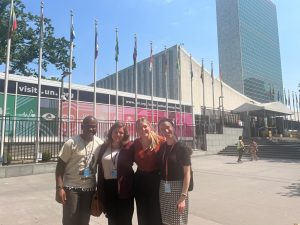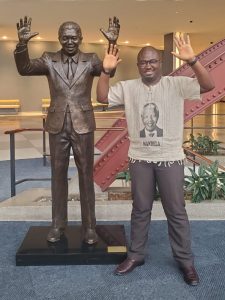The following is taken from the 2024 ELCA World Hunger Lent Study. The full resource can be ordered as a hardcopy or downloaded as a PDF in English or Spanish at the link here.
Week 4 — Restoration
•••
Numbers 21:4-9; Psalm 107:1-3, 17-22; Ephesians 2:1-10; John 3:14-21
The first reading for this fourth week of Lent is from the book of Numbers. The Israelites have been on their exodus from Egypt to the Promised Land for years, and the goal is nigh. They have received the law from God through Moses at Sinai and are now on the final leg of their journey. Yet rather than being hopeful and eager, they “became discouraged” (Numbers 21:4), complaining about Moses’ leadership and even their “miserable food” (21:5). God’s response is inventive, if not entirely gracious: “poisonous serpents” sent by God “bit the people, so that many Israelites died” (21:6). The people repent, Moses prays, and God grants Moses a staff that will heal all who are bitten.
It’s not the kindest of stories. Nor is it the easiest story to explore as we continue our study of encounters with God. What exactly is being encountered here, besides a seemingly devious and vengeful God who sends venomous serpents to kill people, then rescues them?
The psalmist gives the story a different spin, omitting any mention of the venomous snakes and lifting up the healing of God, who heard the cries of the people and “saved them from their distress” (107:19).
Despite the psalmist’s sanitized take, this pattern can be found throughout the story of the exodus. God rescues the people, the people turn on God, God punishes them, they repent, God shows mercy. Over and over and over.
These biblical narratives are often used to extol the merciful nature of God, who repeatedly forgives the people despite their sin. Truly, God does show mercy. But this might be cold comfort to the Israelites killed by snakebites. “Mercy” may not be the only lesson implicit in the people’s journey with God.
The exodus begins in Egypt, where God’s people are enslaved and oppressed. God seeks out Moses to lead the people, lays low the unjust Pharaoh and accompanies the people across the wilderness for generations, providing food, water and safety along the way. The people are often ungrateful and at times even spiteful, turning to idolatry in their frustration and despair. Yet God continues to lead and provide. Why?
Simply put, God is invested in this community. God has a vested interest in its future, and this faithfulness to the people the Israelites will become supplies the theme for this week’s study. Despite the violence of the story as recorded in Numbers, there is a lesson here about what it means to encounter God in the restoration of relationships.
The covenant between God and the people leaves both parties vulnerable to the other. By leading them from Egypt and forging a covenant with them, God has tied their futures together. God has a plan and has invested much to ensure that the people will be part of it. This people, this nation, is God’s future. The provisions God grants are not mere merciful gifts but further investments toward a future shared by God and the people who will become Israel.
Of course, the church is not God; we are spiritual descendants of the wandering Hebrews, dependent still on God’s promise of this future. Yet there may be something we can learn here about what it means to pursue a promise of hope and restoration.
Often we see the virtues of mercy and grace in the church’s work to end hunger. Food, clothing, shelter and cash donations are often interpreted as mercies showered on suffering people or as gifts offered to neighbors in need. But in reality our response to hunger surpasses a desire to meet immediate needs. In our Lutheran faith, meeting others’ needs is a response to the grace we have received from God, the grace that restores our relationship with our Creator. We are set free from worrying about our relationship with God, from feeling as if we aren’t good enough or loved enough. The grace of Jesus Christ sets us free from focusing on ourselves so that we can freely focus on others. In other words, God restores our relationship with God so that we can restore our right relationships with one another.
Yet, in true Lutheran fashion, we aren’t really the ones doing the restoring; God is working within and through us, restoring our relationships with each other and all creation. That’s what makes grace so complex. Grace is the “stuff” that restores our relationships with God or our neighbors.
Serving the neighbor is one step toward that restoration. In its most authentic form, service is a foretaste of the full restoration we will experience when the promise of God is fulfilled. Today we dine together as neighbors at the table of a community meal. Tomorrow we shall dine together as the beloved of God at the banquet.
There is something to be learned here about the shape service ought to take. When we understand serving our neighbor as an obligation commanded by God or as something we do because it is “right,” we miss what service is really about. Responding to hunger is not about fulfilling God’s law (as Lutherans, we know we can’t do that anyway). Responding to hunger is about restoring our community and world.
It is as much about the future God is building through us as it is about the present needs we are meeting through each other today.
At just 14, Lalistu knows the importance of restoring community. Lalistu’s family was one of the poorest in their town in Ethiopia. Both her parents are HIV-positive, and the stigma surrounding HIV and AIDS isolated Lalistu’s family from their community and kept them from earning enough money to feed themselves. The Central Synod Development Department of the Ethiopian Evangelical Church Mekane Yesus (EECMY) provided food for the family and school supplies for Lalistu and her brother. Funded in part by ELCA World Hunger, the project supports 80 orphans and vulnerable children in the Oromia region of Ethiopia, providing them with school supplies, food, clothing and other basic needs for survival. In addition, the project leaders work with communities to help them better understand the needs of people living with HIV and AIDS.
With this support Lalistu and her brother have excelled in school. Their mother has found work selling and trading goods, and the family has gotten support to start building their own home. Instead of relying on relatives for their survival, Lalistu and her family can look ahead to a time when they will have access to the things they need. The program has not only inspired their hope for a brighter economic and educational future; it has helped to change the perceptions and attitudes of people in their community. Instead of feeling isolated, Lalistu and her family now feel accepted by their neighbors.
This restoration of community relationships is critically important. The stigma surrounding HIV and AIDS, like the stigma that often accompanies hunger and poverty, can create huge obstacles for those who are stigmatized. They may be less likely to seek medical treatment or acquire nutritional support, and more likely to face hunger or poverty in the future. We experience this over and over again, whether it is the stigma faced by Lalistu’s parents and other people living with HIV in countries around the world or the stigma experienced by the clients of food pantries. Feeding someone or helping them find work can go only so far if the community in which they are fed or employed continually excludes, marginalizes or discriminates against them.
Simply put, we cannot end hunger if our communities remain places of exclusion, fear or stigma. If the ministries we support and participate in are to be meaningful and authentic, they must be what God calls them to be: sites where God is encountered through the experience of restoration. Ministry in response to hunger is ministry in response to the promise that God is drawing us all together toward a reconciled and restored future. Every meal served, every neighbor heard and every new relationship built in the context of service gives us a foretaste of the fullness of life to which God will restore us and our world. When this happens, our service will change. We will change. And our communities will change.
God makes that ongoing restoration possible by investing in a future when hunger will be no more. How might our work as church together change when we see it as not merely a “good thing” but also an investment in this shared future?
Reflection Questions
How might stigma or exclusion make it more difficult for a family such as Lalistu’s to overcome hunger and poverty?
What does it mean to believe that God is invested in our future?
How might our understanding of hunger ministries change when we view them as a restoration of community?
How are people experiencing hunger or poverty stigmatized in your community? What has the church done or what could it do to change this?
Semana 4 — Restauración
•••
Números 21:4-9; Salmo 107:1-3, 17-22; Efesios 2:1-10; Juan 3:14-21
La primera lectura de esta cuarta semana de Cuaresma es del libro de Números. Los israelitas han estado en su éxodo de Egipto hacia la Tierra Prometida durante años, y la meta está cerca. Han recibido la ley de Dios a través de Moisés en el Sinaí y ahora están en el tramo final de su jornada. Sin embargo, en lugar de sentirse esperanzados y entusiasmados, “se impacientaron” (Números 21:4) y se quejaron del liderazgo de Moisés y aun de su “pésima comida” (21:5). La respuesta de Dios es inventiva, si no del todo misericordiosa: “serpientes venenosas” enviadas por Dios “los mordier[o]n, y muchos israelitas murieron” (21:6). El pueblo se arrepiente, Moisés ora, y Dios le da a Moisés un asta que sana a todos los que son mordidos.
Esta no es la más benévola de las historias. Tampoco es la historia más fácil de analizar en la continuación de nuestro estudio de los encuentros con Dios. ¿Qué es exactamente lo que se está encontrando aquí, además de un Dios aparentemente inescrupuloso y vengativo que envía serpientes venenosas para matar a las personas y luego rescatarlas?
El salmista le da un giro diferente a la historia, pues omite toda mención de las serpientes venenosas y exalta la sanación de Dios, quien escuchó los clamores del pueblo y “los salvó de sus aflicciones” (107:19).
A pesar de la versión expurgada del salmista, en toda la historia del éxodo se puede encontrar este patrón. Dios rescata al pueblo, el pueblo se vuelve contra Dios, Dios los castiga, se arrepienten, Dios muestra misericordia. Una y otra vez.
Estas narraciones bíblicas se utilizan a menudo para ensalzar el carácter misericordioso de Dios, que perdona repetidamente a las personas a pesar de su pecado. Verdaderamente, Dios muestra misericordia. Pero esto no les serviría de consuelo a los israelitas que habían muerto por mordeduras de serpientes. Es posible que la “misericordia” no sea la única lección implícita en la jornada del pueblo con Dios.
El éxodo comienza en Egipto, donde el pueblo de Dios es esclavizado y oprimido. Dios busca a Moisés para guiar al pueblo, humilla al injusto faraón, y acompaña al pueblo a través del desierto durante generaciones, dándoles comida, agua y seguridad a lo largo del camino. El pueblo a menudo se muestra ingrato y a veces incluso rencoroso, pues en su frustración y desesperación recurren a la idolatría. Sin embargo, Dios sigue guiando y proveyendo. ¿Por qué?
En pocas palabras, Dios ha invertido en esta comunidad. Dios tiene un interés personal en su futuro, y esta fidelidad al pueblo en el cual los israelitas se convertirán nos da el tema del estudio de esta semana. A pesar de la violencia de la historia según es registrada en Números, aquí hay una lección sobre lo que significa encontrar a Dios en la restauración de las relaciones.
El pacto entre Dios y el pueblo deja a ambas partes vulnerables la una a la otra. Al sacarlos de Egipto y forjar un pacto con ellos, Dios ha unido sus futuros. Dios tiene un plan y ha invertido mucho para asegurarse de que el pueblo sea parte de este. Este pueblo, esta nación, es el futuro de Dios. Las provisiones que Dios concede no son meros regalos misericordiosos, sino inversiones adicionales hacia un futuro compartido por Dios y el pueblo en el cual Israel se convertirá.
Por supuesto, la iglesia no es Dios; somos descendientes espirituales de los hebreos errantes, dependientes todavía de la promesa de Dios de este futuro. Sin embargo, es posible que aquí haya algo que podemos aprender acerca de lo que significa perseguir una promesa de esperanza y restauración.
Con frecuencia vemos las virtudes de la misericordia y la gracia en el trabajo que hace la iglesia para acabar con el hambre. Las donaciones de alimentos, ropa, refugio y dinero en efectivo a menudo se interpretan como misericordias derramadas sobre personas que sufren o como regalos ofrecidos a vecinos necesitados. Pero en realidad nuestra respuesta al hambre va más allá del deseo de satisfacer las necesidades inmediatas. En nuestra fe luterana, satisfacer las necesidades de los demás es una respuesta a la gracia que hemos recibido de Dios, la gracia que restaura nuestra relación con nuestro Creador. Somos liberados de preocuparnos por nuestra relación con Dios, de sentir que no somos lo suficientemente buenos o amados. La gracia de Jesucristo nos libera de centrar nuestra atención en nosotros mismos para que podamos concentrarnos libremente en los demás. En otras palabras, Dios restaura nuestra relación con Dios para que podamos restaurar nuestras relaciones adecuadas entre nosotros.
Sin embargo, al más puro estilo luterano, no somos realmente nosotros los que hacemos la restauración; Dios está obrando dentro y a través de nosotros, restaurando nuestras relaciones entre nosotros y con toda la creación. Eso es lo que hace que la gracia sea tan compleja. La gracia es la “cosa” que restaura nuestras relaciones con Dios o con nuestro prójimo.
Servir al prójimo es un paso hacia esa restauración. En su forma más auténtica, el servicio es un anticipo de la restauración completa que experimentaremos cuando se cumpla la promesa de Dios. Hoy cenamos juntos como vecinos en la mesa de una comida comunitaria. Mañana cenaremos juntos como los amados de Dios en el banquete.
Aquí hay algo que aprender sobre la forma que el servicio debe tomar. Cuando vemos el servicio al prójimo como una obligación ordenada por Dios o como algo que hacemos porque es “lo correcto”, perdemos de vista de qué se trata el servicio realmente. Responder al hambre no se trata de cumplir la ley de Dios (como luteranos, sabemos que no podemos hacerlo de todos modos). Responder al hambre se trata de restaurar nuestra comunidad y el mundo. Se trata tanto del futuro que Dios está construyendo a través de nosotros como de las necesidades presentes que estamos satisfaciendo a través de los unos con los otros hoy.
Con tan solo 14 años, Lalistu sabe la importancia de restaurar la comunidad. La familia de Lalistu era una de las más pobres de su pueblo en Etiopía. Sus padres son seropositivos, y el estigma en torno al VIH y al SIDA aisló a la familia de Lalistu de su comunidad y les impidió ganar suficiente dinero para alimentarse. El Central Synod Development Department [Departamento de Desarrollo del Sínodo Central] de la Ethiopian Evangelical Church Mekane Yesus (EECMY) [Iglesia Evangélica Etíope Mekane Yesus] proporcionó alimentos para la familia y útiles escolares para Lalistu y su hermano. Financiado en parte por ELCA World Hunger, el proyecto apoya a 80 huérfanos y niños vulnerables de la región de Oromia en Etiopía, proporcionándoles útiles escolares, alimentos, ropa y otras necesidades básicas para la supervivencia. Además, los líderes del proyecto trabajan con las comunidades para ayudarlas a comprender mejor las necesidades de las personas que viven con el VIH y el SIDA.
Con este apoyo, Lalistu y su hermano se han destacado en la escuela. Su madre ha encontrado trabajo vendiendo e intercambiando bienes, y la familia ha recibido apoyo para comenzar a construir su propia casa. En lugar de depender de sus parientes para su supervivencia, Lalistu y su familia pueden mirar hacia el futuro para tener acceso a las cosas que necesitan. El programa no solo ha inspirado su esperanza de un futuro económico y educativo más brillante; también ha ayudado a cambiar las percepciones y actitudes de las personas de su comunidad. En lugar de sentirse aislados, ahora Lalistu y su familia se sienten aceptados por sus vecinos.
Esta restauración de las relaciones comunitarias es de vital importancia. El estigma que hay en torno al VIH y el SIDA, al igual que el estigma que a menudo acompaña al hambre y la pobreza, pueden crear enormes obstáculos para quienes son estigmatizados. Es menos probable que busquen tratamiento médico o reciban apoyo nutricional, y es más probable que se enfrenten al hambre o la pobreza en el futuro. Experimentamos esto una y otra vez, ya sea por el estigma que enfrentan los padres de Lalistu y otras personas que viven con el VIH en países de todo el mundo, o el estigma que experimentan los clientes de las despensas de alimentos. Alimentar a alguien o ayudarlo a encontrar trabajo solo puede llegar hasta cierto punto si la comunidad en la que se alimenta o emplea lo excluye, margina o discrimina continuamente.
En pocas palabras, no podemos acabar con el hambre si nuestras comunidades siguen siendo lugares de exclusión, miedo o estigma. Si los ministerios que apoyamos y en los que participamos han de ser significativos y auténticos, deben ser lo que Dios los llama a ser: lugares en los que uno se encuentra con Dios a través de la experiencia de la restauración. El ministerio en respuesta al hambre es el ministerio en respuesta a la promesa de que Dios nos está uniendo a todos hacia un futuro reconciliado y restaurado. Cada comida servida, cada prójimo escuchado y cada nueva relación formada en el contexto del servicio nos da un anticipo de la plenitud de la vida a la que Dios nos restaurará a nosotros y a nuestro mundo. Cuando esto ocurra, cambiará nuestro servicio, cambiaremos nosotros, y cambiarán nuestras comunidades.
Dios hace posible esa restauración continua al invertir en un futuro en el que ya no existirá el hambre. ¿Cómo podría cambiar nuestro trabajo como iglesia cuando lo vemos no solo como algo “bueno” sino también como una inversión en este futuro compartido?
Preguntas de reflexión
¿De qué manera el estigma o la exclusión pueden dificultar que una familia como la de Lalistu supere el hambre y la pobreza?
¿Qué significa creer que Dios ha invertido en nuestro futuro?
¿Cómo podría cambiar nuestra comprensión de los ministerios del hambre cuando los vemos como una restauración de la comunidad?
¿Cómo se estigmatiza a las personas que padecen hambre o pobreza en su comunidad? ¿Qué ha hecho la iglesia o qué podría hacer para cambiar esto?



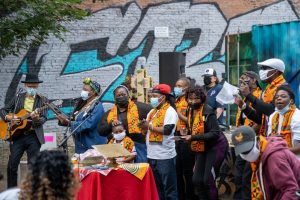
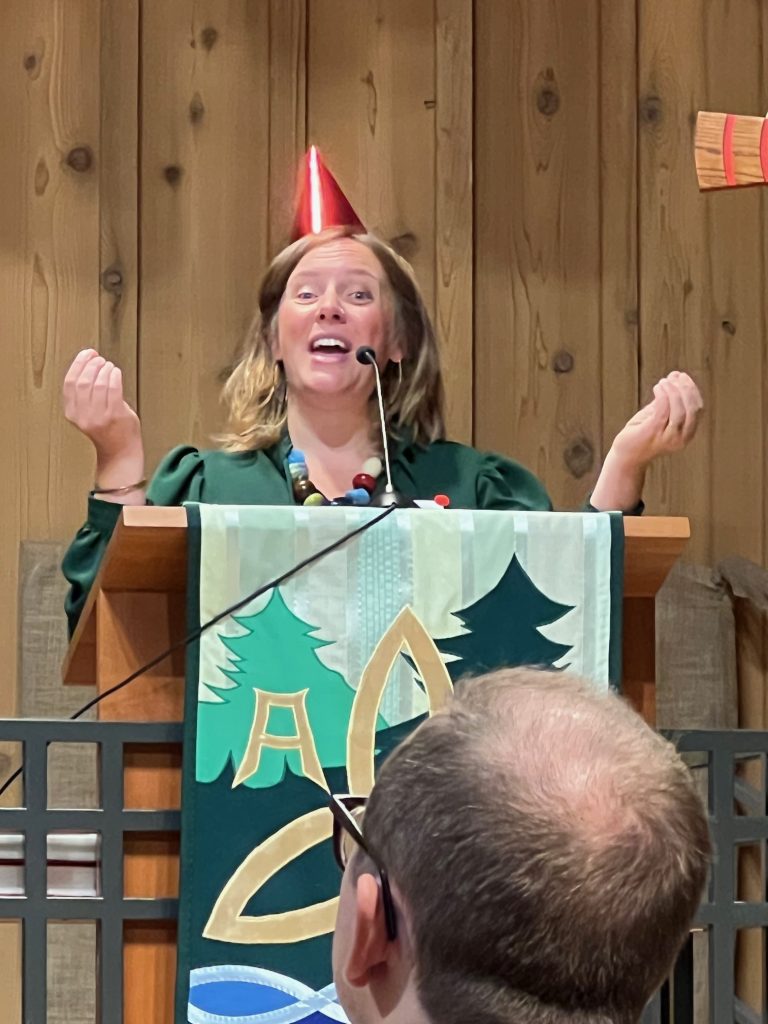
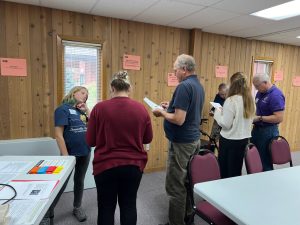
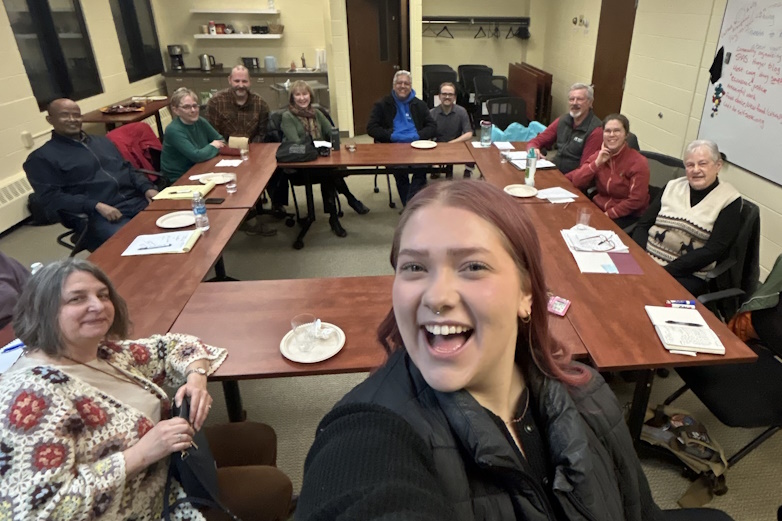
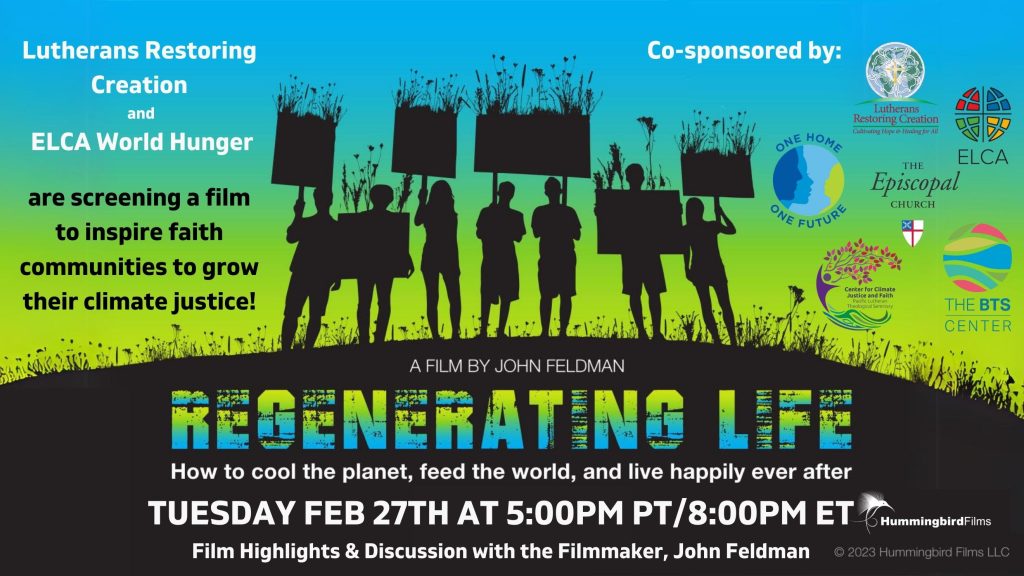
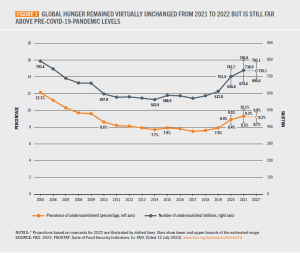


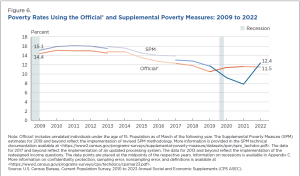
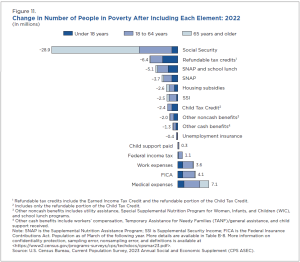
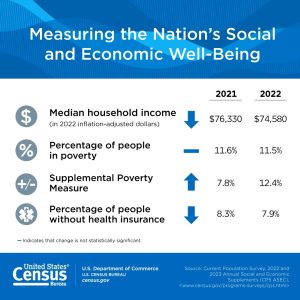
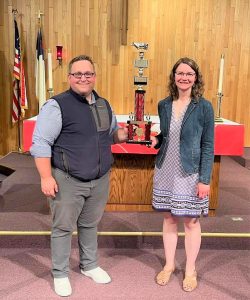 Since its charter as a Lutheran church in 1960, Calvary Lutheran Church in Perham, Minn., has always had a heart for supporting missions outside their church walls, says Associate Pastor Eric Clapp.
Since its charter as a Lutheran church in 1960, Calvary Lutheran Church in Perham, Minn., has always had a heart for supporting missions outside their church walls, says Associate Pastor Eric Clapp.
